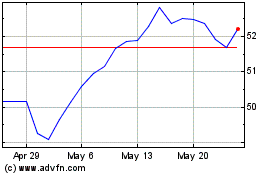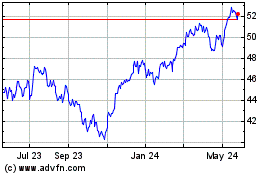Although Europe is presently on a roller-coaster ride, the
continent has lately come out of the crisis that hit several years
ago. The lull then had been pretty widespread, but the epicenter of
the turmoil was arguably in the Eurozone.
When the Eurozone returned to the growth path in Q2 by improving
0.3%, all eyes again shifted toward this vital market. Reduced debt
worries and improved growth in some key members like Germany helped
create this optimism.
To add to this, the recent cut in benchmark rate to a record low of
0.25% by the European Central Bank (ECB) to trigger growth and
inflation signals that the authority will leave no stone unturned
to boost activity in the region (see all the European ETFs
here).
Notably, the ECB follows a directive to maintain inflation rates
close to 2% which was far behind the 0.7% inflation rise in
October.
Though the region is far from attaining sustainable growth, just
the end of a long-run recession itself is great news. The big
component of the region – Germany – walked on the growth path to
start the year.
Although, in the third quarter, France dipped after peeping into
the growth corner, sustained improvement in the country seems close
at hand.
The Eurozone’s third largest economy – Italy – will likely log GDP
growth in the final quarter of the year putting an end to its nine
consecutive quarter long recessionary steak.
The Netherlands broke free from recession in Q3 scoring 0.1%
quarter over quarter. The growth rate was in stark contrast to a
sharp drop of 0.9% in the year-ago quarter.
Thus, given the region’s slow-but-improving fundamentals, a look at
the top ranked ETF in Europe or rather some countries in the
Eurozone could be a good idea, especially by using our Zacks ETF
Ranking system.
About the Zacks ETF Rank
The Zacks ETF Rank provides a recommendation for the ETF in the
context of our outlook for the underlying industry, sector, style
box or asset class (Read: Zacks ETF Rank Guide).
Our proprietary methodology also takes into account the risk
preferences of investors. ETFs are ranked on a scale of 1 (Strong
Buy) to 5 (Strong Sell) while they also receive one of three risk
ratings, namely Low, Medium or High.
The aim of our models is to select the best ETFs within each risk
category. We assign each ETF one of the five ranks within each risk
bucket. Thus, the Zacks ETF Rank reflects the expected return of an
ETF relative to other products with a similar level of risk.
For investors seeking to apply this methodology to their portfolio
in the European equities space, we have taken a closer look at the
top ranked EZU. This ETF has a Zacks ETF Rank of 1 or ‘Strong Buy’
(see the full list of top ranked ETFs) and is detailed below:
EWZ in Focus
Launched in July 2000,
iShares MSCI EMU ETF (EZU)
is a passively managed exchange traded fund (ETF) looking to
deliver the return of the MSCI EMU Index before fees and
expenses.
The fund is among the most popular in the Europe equities space
with more than $7.0 billion in assets. With a huge trading volume
of around 3,000,000 shares a day, the fund provides investors ample
liquidity.
The choice is also a cheaper one as it charges 49 basis points in
fees a year which is quite below the average expense ratio in the
Europe equities space. In fact, higher trading volume led to
relatively lower expenses.
With 244 stocks in its basket, this fund from iShares puts only
25.0% of its total assets in the top 10 holdings with no company
accounting for more 3.31% of the total, suggesting low
concentration risk. Top companies include Total SA, Sanofi and
Bayer AG, all of which account for around 9% of the assets.
In terms of sector exposure, the top allocation, financials,
comprise a little greater than one-fifth of the total assets
followed by industrial companies making up around 14%.
Beyond this, consumer discretionary (12.7%) and consumer staples
(10.6%) round out the top four. Information technology (5.18%) gets
the least weight (read: Forget Europe's Currency Risks with These
Hedged ETFs).
Style-wise, the fund has a value tilt with 56% exposure, keeping
the fund away from excessive volatility. As much as 88% focus on
large caps also calls for somewhat lower volatility.
Although it seeks to provide international diversification for U.S
investors, it is prudent to note that it has a strong correlation
with the S&P 500 Index as indicated by an R-squared of 78%
against the S&P 500.
The fund has returned around 19.4% in the year-to-date frame ending
November 22, 2013 which surpassed the biggest European fund by
assets
Vanguard FTSE Europe ETF’s (VGK) 16.6%
return.
EZU has returned an impressive 28.8% roughly in the last one-year
period ended September 30, 2013. The fund is currently hovering
near its 52-week high level. EZU pays out a yield of 2.20% per
annum.
Bottom Line
This ETF is appropriate for investors looking for a targeted bet on
European stocks with a focus on maximizing total income in the form
of dividends as well as capital appreciation.
Though we expect a rough road to recovery as evident from slowing
Euro-area growth of just 0.1% in Q3 as opposed to 0.3% in Q2, the
region has surely come out of the meltdown.
Thus, investors having a steady appetite for risk can consider
buying the product on the recent dip. Just remember, the fund is
unhedged, making it vulnerable to any weakness in the Euro.
We don’t expect this to create too much of a concern in the near
term though, given the current market scenario, suggesting that
this could be a solid pick for those seeking broad Europe exposure
at this time.
Want the latest recommendations from Zacks Investment Research?
Today, you can download
7 Best Stocks for the Next 30
Days. Click to get this free report >>
ISHARS-EMU IDX (EZU): ETF Research Reports
VANGD-FTSE EUR (VGK): ETF Research Reports
To read this article on Zacks.com click here.
Zacks Investment Research
Want the latest recommendations from Zacks Investment Research?
Today, you can download 7 Best Stocks for the Next 30 Days. Click
to get this free report
iShares MSCI Eurozone ETF (AMEX:EZU)
Historical Stock Chart
From May 2024 to Jun 2024

iShares MSCI Eurozone ETF (AMEX:EZU)
Historical Stock Chart
From Jun 2023 to Jun 2024
